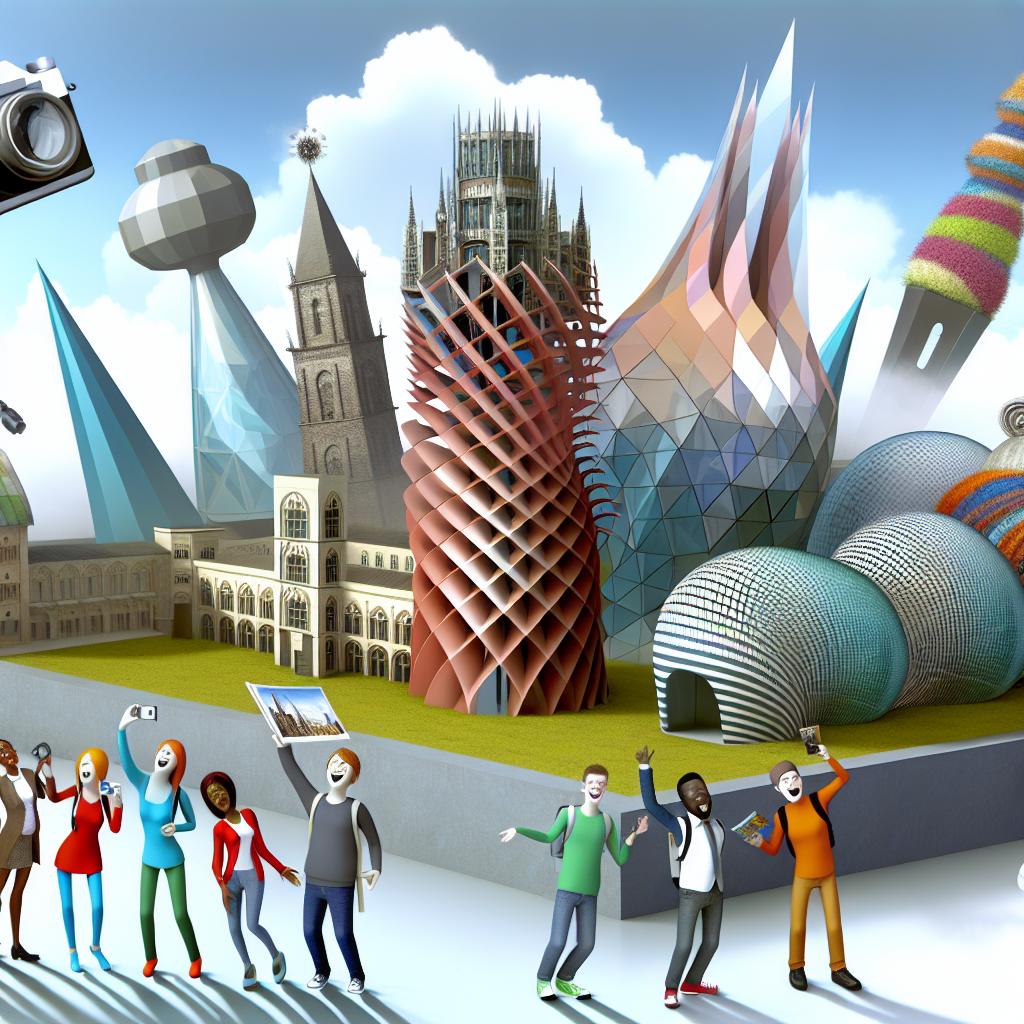The Unusual Allure of European Museums
Europe, a continent steeped in history and culture, is renowned for its vast array of museums. While many of these institutions focus on well-known themes like art, history, and science, a number of them surprise and captivate visitors through their unusual and unique offerings. These museums provide insights into diverse aspects of culture, history, and human creativity in ways that challenge traditional perceptions and often present the unexpected.
The Icelandic Phallological Museum
Nestled in the heart of Reykjavík, Iceland, the Icelandic Phallological Museum stands out for its distinctive focus. Unlike typical museums, this establishment centers its exhibition around phalluses, providing a comprehensive look at the male genitalia across different species of Icelandic mammals, both terrestrial and marine. This approach makes the museum especially noteworthy because it tackles a subject often regarded as taboo. By employing a scientific perspective, the museum educates the public and reduces the stigma associated with this aspect of biology. Through its vast collection, visitors are invited to explore one of nature’s most fascinating and least discussed features with curiosity and understanding. Furthermore, this museum serves as a progressive beacon, showcasing the importance of embracing all aspects of the natural world without prejudice.
Museum of Broken Relationships
Located in Zagreb, Croatia, the Museum of Broken Relationships delves into the deeply personal realm of failed relationships. This museum is a testament to human experiences, collecting personal items and narratives that reflect loss and heartache from around the globe. What sets this museum apart is its focus on emotional storytelling. Rather than displaying art or historical artifacts, it invites contributors to share relics of their past relationships alongside their associated stories. Each exhibit personalizes the experience, offering a unique emotional journey for visitors who may recognize aspects of their own lives in the displays. As a space for reflection on love and loss, the museum challenges visitors to consider the universality of human emotions and the shared experiences that bind us.
Vatican Museums: The Galleria Borghese
The Vatican Museums are celebrated for their extensive collection of art and historical artifacts, attracting millions of visitors annually. Among these museums, the Galleria Borghese stands out, providing a unique angle on collecting practices throughout history. While the gallery showcases renowned works from classical antiquity, it also features a varied assortment of eccentric pieces, including unusual animal sculptures and intricate tapestries. These items reflect the diverse interests of historical collectors and offer insight into the eclectic tastes and preferences of the elite during different periods. The gallery is a vivid illustration of how art collection has evolved, blending conventional pieces with those that push boundaries. This combination creates an intriguing space where classical and unconventional coexist, posing questions about what constitutes art and how collections reflect cultural values over time.
The German Emigration Center
Situated in Bremerhaven, Germany, the German Emigration Center tells the story of millions who emigrated from Germany over centuries. This museum goes beyond traditional exhibits by employing interactive displays to bring personal migration stories to life. Each section of the museum is designed to simulate the migration experience, allowing visitors to step into the shoes of those who embarked on journeys that forever changed their lives. The museum also provides broader historical context, illustrating how migration has shaped societies both in Germany and abroad. By connecting individual stories with larger global trends, it highlights the complex interplay between personal choices and global movements, offering a multifaceted view of the migration experience.
The Paris Sewer Museum
Beneath the bustling streets of Paris lies the Paris Sewer Museum, an establishment that explores the city’s intricate sanitation system. Perhaps an unexpected topic for a museum, this institution offers visitors an underground tour that reveals the engineering feats constituting the backbone of modern Paris. It provides a rare peek into the underbelly of the city, showcasing the tunnels and mechanisms that enable Paris to function seamlessly above ground. This museum is particularly compelling for those interested in urban infrastructure and engineering history, offering insights into technological advancements and their impact on city living. By presenting the evolution of urban sanitation, the museum connects past innovations to current urban planning efforts and future challenges, making it an educational destination for anyone with an interest in the complexities of city life.
The Sulabh International Museum of Toilets
Although not located in Europe, the Sulabh International Museum of Toilets in New Delhi is significant for its focus on the historical evolution of sanitation, with noteworthy ties to Europe. This museum traces the development of sanitation practices from ancient times to the present, highlighting the contributions of European innovation along the way. By presenting the history of hygiene and showcasing advancements in toilet design and functionality, it emphasizes the ongoing importance of sanitation in human health and dignity. The museum’s narrative underscores the progress achieved since the Middle Ages and promotes an understanding of hygiene as a fundamental component of societal development. By acknowledging the European influence on sanitation practices, the museum bridges continents and cultures, illustrating the shared human endeavor to improve living conditions.
Conclusion
European museums offer far more than art and historical artifacts. They serve as portals into the diverse realms of human behavior, societal changes, and scientific advancements. Through their distinctive narratives and unconventional themes, these institutions challenge visitors to explore new dimensions of knowledge and deepen their understanding of the world. Each museum provides an opportunity to expand one’s perspective and engage with human creativity and innovation in unexpected and enlightening ways. For those passionate about delving into the unusual and thought-provoking, Europe’s unique museums are extraordinary destinations that promise enriching experiences unlike any other.

